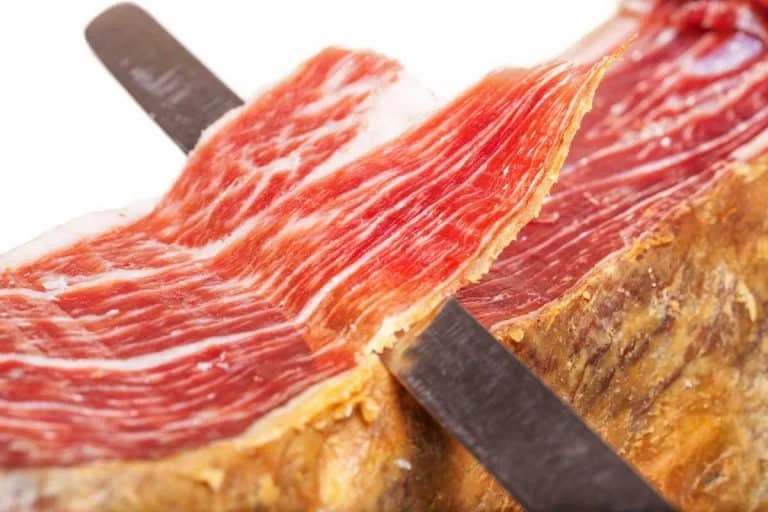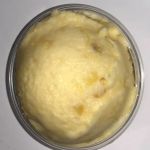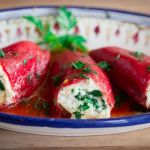
The Art of Making Spanish Jamón Ibérico at Home
- 1. What is Jamón Ibérico?
- 2. The Different Types of Jamón Ibérico
- 3. The Process of Making Jamón Ibérico
- 4. How to Cure Jamón Ibérico at Home
- 5. Tips for Enjoying Your Homemade Jamón Ibérico
Jamón Ibérico, a type of Spanish cured ham, is considered one of the finest meats in the world. Its rich, savory flavor and delicate texture have made it a sought-after delicacy, especially in Spain. If you’ve ever dreamed of making this exquisite ham at home, you’re in luck! In this article, we’ll explore the art of making Jamón Ibérico at home, from understanding its history and different types to the curing process and how you can enjoy it at its best.
1. What is Jamón Ibérico?
Jamón Ibérico is a variety of dry-cured Spanish ham made from the Iberian breed of pigs. This ham is renowned for its unique flavor, which comes from the pigs’ diet and the meticulous curing process. Jamón Ibérico is typically aged for several months, with the best varieties being aged for up to 36 months, allowing the flavors to develop and intensify.
1.1. The Iberian Pig: The Heart of Jamón Ibérico
The Iberian pig is a unique breed native to the Iberian Peninsula. These pigs are known for their marbled fat, which contributes to the rich and distinctive flavor of the ham. The pigs are often fed acorns from oak trees, which play a critical role in the flavor profile of Jamón Ibérico, giving it a nutty, earthy taste that’s unparalleled in other cured hams.
2. The Different Types of Jamón Ibérico
Not all Jamón Ibérico is created equal. There are different types based on the pigs' diet, the curing process, and the region in which they are produced. The most common types of Jamón Ibérico include:
2.1. Jamón Ibérico de Bellota
Considered the highest quality of Jamón Ibérico, this variety comes from pigs that are allowed to roam freely in oak forests and feed on acorns. The rich diet of acorns gives the ham its deep flavor and tender texture. Jamón Ibérico de Bellota is aged for 36 months or more and is the most expensive variety.
2.2. Jamón Ibérico de Cebo
This variety comes from pigs that are fed a diet of grains and legumes, and while still delicious, it doesn’t have the same depth of flavor as the acorn-fed variety. Jamón Ibérico de Cebo is typically aged for a shorter period, around 24 months, and is a more affordable option.
2.3. Jamón Ibérico de Cebo de Campo
This variety is somewhere between the de Bellota and de Cebo types. The pigs are allowed to roam freely in fields but are not exclusively fed acorns. It’s a great middle-ground option, offering a good balance of flavor and price.
3. The Process of Making Jamón Ibérico
Making Jamón Ibérico is an art that involves a combination of traditional methods and time. The process of curing Jamón Ibérico takes months, or even years, and requires patience and precision. Here's a breakdown of the steps involved in making this delicacy:
3.1. Selecting the Right Pigs
The first step in making Jamón Ibérico is selecting the right pigs. The Iberian breed is crucial to achieving the characteristic flavor and texture of the ham. These pigs are raised in free-range conditions, which allow them to develop their unique fat distribution.
3.2. Salting and Curing
Once the pigs are slaughtered, the ham is salted to begin the curing process. The salt draws out moisture from the meat and helps preserve it. The salting process is followed by a lengthy curing period, which can last anywhere from several months to several years, depending on the type of Jamón Ibérico being produced.
3.3. Drying and Aging
After the initial curing, the ham is hung in a cool, dry environment to age. The aging process is crucial for developing the deep, complex flavors that define Jamón Ibérico. During this time, the ham is exposed to the right conditions of humidity and temperature, ensuring the perfect texture and taste.
4. How to Cure Jamón Ibérico at Home
While making traditional Jamón Ibérico at home is a challenging and time-consuming process, it’s not impossible. Here’s a simplified version of how to cure your own Jamón Ibérico at home:
4.1. Selecting the Right Cut
If you’re making Jamón Ibérico at home, start by selecting a high-quality cut of pork leg. The ham should have a good amount of fat, as this will help develop the flavor and texture during the curing process. You can often find whole pork legs or specific cuts from suppliers that specialize in Spanish meats.
4.2. Salting the Ham
The next step is salting the ham. Rub a generous amount of coarse sea salt all over the meat, ensuring that it’s well-coated. Place the ham in a cool, dry place, and let it rest for about 24-48 hours. This step helps preserve the meat and prepares it for the long curing process.
4.3. Curing and Aging
After salting, the ham needs to be hung in a dry, cool environment to cure for several months. You can use a specialized curing chamber or a cool, dark space in your home with good ventilation. During this time, the ham should be checked regularly for any signs of mold or uneven drying.
4.4. Patience is Key
Curing Jamón Ibérico at home takes time and patience. It can take anywhere from 6 months to a year for the ham to reach optimal flavor. The longer the aging process, the more intense and complex the flavors will be. Be patient, and enjoy the process of creating this iconic Spanish delicacy.
5. Tips for Enjoying Your Homemade Jamón Ibérico
Once your Jamón Ibérico is ready, it’s time to enjoy the fruits of your labor. Here are some tips for serving and enjoying this incredible Spanish delicacy:
5.1. Slice It Thin
When serving Jamón Ibérico, it’s important to slice it thinly to fully appreciate the flavor and texture. Thin slices allow the fat to melt in your mouth, releasing the rich, savory taste of the ham. Use a sharp knife or a specialized ham slicer for the best results.
5.2. Serve with Wine
Jamón Ibérico pairs perfectly with a glass of Spanish red wine, such as a Tempranillo or a Rioja. The wine’s tannins complement the richness of the ham, making for an unforgettable tasting experience.
5.3. Pair with Other Spanish Delicacies
For the full Spanish experience, serve your Jamón Ibérico with other traditional Spanish foods like manchego cheese, olives, or a fresh baguette. The combination of flavors will transport you to Spain, right in your own home.
For the best selection of Spanish ingredients and products, visit Rubi Spanish Table, where you can find high-quality meats, cheeses, and tools to elevate your Spanish cooking.









 Tap & Tapas4.0 (84 reviews)
Tap & Tapas4.0 (84 reviews) Spanish Island Foods4.0 (97 reviews)
Spanish Island Foods4.0 (97 reviews) Nano's NJ4.0 (96 reviews)
Nano's NJ4.0 (96 reviews) Spanish Food Restaurant4.0 (47 reviews)
Spanish Food Restaurant4.0 (47 reviews) Las Fronteras4.0 (11 reviews)
Las Fronteras4.0 (11 reviews) Las Palmas Deli4.0 (225 reviews)
Las Palmas Deli4.0 (225 reviews) How to Make Spanish Migas con Chorizo y Huevos: Traditional Bread, Sausage, and Egg Dish
How to Make Spanish Migas con Chorizo y Huevos: Traditional Bread, Sausage, and Egg Dish How to Make Spanish Tarta de Naranja: Orange Cake Recipe
How to Make Spanish Tarta de Naranja: Orange Cake Recipe How to Make Authentic Spanish Paella at Home
How to Make Authentic Spanish Paella at Home How to Make Spanish Tarta de Fresas: Delicious Strawberry Cake Recipe
How to Make Spanish Tarta de Fresas: Delicious Strawberry Cake Recipe Exploring the Best Spanish Seafood Dishes to Try at Home
Exploring the Best Spanish Seafood Dishes to Try at Home How to Make Spanish Piquillos Rellenos: Stuffed Peppers Recipe
How to Make Spanish Piquillos Rellenos: Stuffed Peppers Recipe